 Facebook
Facebook
 X
X
 Instagram
Instagram
 TikTok
TikTok
 Youtube
Youtube

San Diego needs more broken ankles caused by sidewalk upheavals, more expensive tire realignments and axle repairs resulting from potholes, and more sewer backups into residences.
Then San Diegans may wake up to their woeful infrastructure problem. “People want their streets fixed but aren’t that interested in anybody else’s streets,” says Norma Damashek, civic activist. “If our sewers don’t back up into our own house, we assume everything is okay.”

In November, Andrea Tevlin, independent budget analyst, said that the city’s infrastructure deficit is above $2 billion, more than double the level of 2012. And that doesn’t include added costs to satisfy new storm-water regulations or expenses for new infrastructure. Multiple measures to combat long-term drought and climate change are not included in that number.

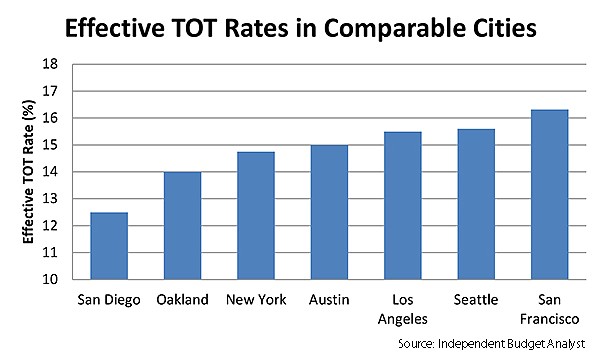

“If you look at road repair, water and sewer lines, basic infrastructure, $2 billion sounds like a lowball figure,” says Steve Erie, professor of political science and director emeritus of the Urban Studies and Planning Program at the University of California San Diego. In the city of San Diego, “Infrastructure will always finish last competing with convention centers and subsidized sports stadiums. This is a town that has never figured out how to do infrastructure.”
Local politicians acknowledge the neglect but don’t do much about it. On April 26, 2012, the San Diego County Grand Jury issued a report on San Diego city street repair, funding, and reforms. “There are many public outcries and complaints concerning the City of San Diego’s management of its street repair backlog,” said the grand jury, recommending a “broad-scale rethinking of repair and maintenance of this vital community asset.” In November 2011, only 10 percent of San Diego’s major streets were in good condition, said the panel, quoting a national research group.
The same research group said 50 percent of San Diego’s major thoroughfares were in poor condition — “more than twice the national average for large population areas,” said the grand jury. Importantly, it said that “a status quo service level that slowly deteriorates streets over time is not satisfactory.”
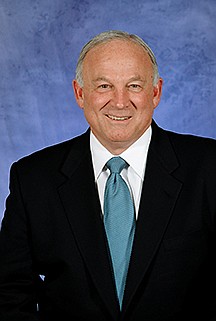
Then–mayor Jerry Sanders agreed, although he partially disagreed with some of the grand jury’s other pronouncements.
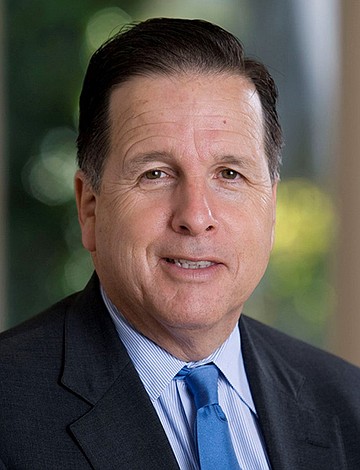
Michael Aguirre, who was city attorney from 2004 to 2008, several times reminded the council that city charter section 26.1 provides that it is “the obligation and responsibility of The City of San Diego to provide public works services, water services, building inspection services, public health services, park and recreation services, library services, and such other services and programs as may be desired.”
San Diego must have sufficient capital assets, and those assets, including infrastructure, must be maintained, says Aguirre, adding, “The city was not keeping track of how bad it was getting.”
He doesn’t think significant headway has been made since his time in office. “Our city is deteriorating, its infrastructure is crumbling, its roads are in worsening shape while the council watches hundreds of millions of dollars drained away into excessive pensions and doesn’t have the money to address the problem.”
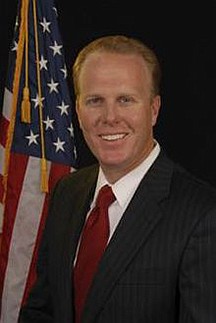
As a candidate, mayor Kevin Faulconer noted that poor road conditions were picking motorists’ pockets. “As financial crises and unsustainable pension benefits took tax dollars away from San Diego communities, the City of San Diego developed a backlog of neighborhood repairs estimated to be as high as $3 billion,” Faulconer said. “Historically, the city kept incomplete records and did not adequately track when records were needed.”
In November of last year, Faulconer released his five-year financial outlook, and 98 percent of priority spending initiatives were for infrastructure and neighborhoods and public safety. However, recently the mayor said he wants to keep the Chargers in San Diego, and realistically, that won’t happen without the city putting up 70 to 80 percent of the money for a stadium. (Harvard urban-planning expert Judith Grant Long studied 121 sports facilities and found that when hidden costs are taken into account, on average, taxpayers pick up 78 percent of the tab.)
Unfortunately, in San Diego, infrastructure may take a backseat to subsidizing a billionaire family. “It’s very likely people will get sucked in” to a massive stadium subsidy, says Damashek. “People will consider what makes them feel good, not whether we have the money to pay for it.”
Ah, money. Independent budget analyst Tevlin says that to tackle the infrastructure problem, “It is clear that the city must find new revenue sources.” Compared to other cities, “San Diego’s fees and taxes are low.” To wit: San Diego’s sales tax is 8 percent; San Jose’s and San Francisco’s are 8.75 percent; Los Angeles’s 9.0; and Seattle’s 9.5. San Diego’s transit occupancy (hotel) tax is 12.5 percent; the Los Angeles rate is above 15 percent and San Francisco above 16. San Diego has no parking tax, but Los Angeles has one at 10 percent and San Francisco 25. San Diego has no utility users tax; many other cities have one from 1 to 11 percent. San Diego has free refuse collection; no other major California city does. San Diego’s storm-water fees are lower than those in other state cities.
Following Proposition 13, “Other California cities found new revenue sources. San Diego has not,” says Erie, lamenting the “tax averse” citizenry. The voters routinely reject bond issues. “As a result, San Diego infrastructure and public services suffer.”
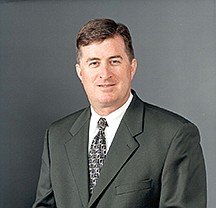
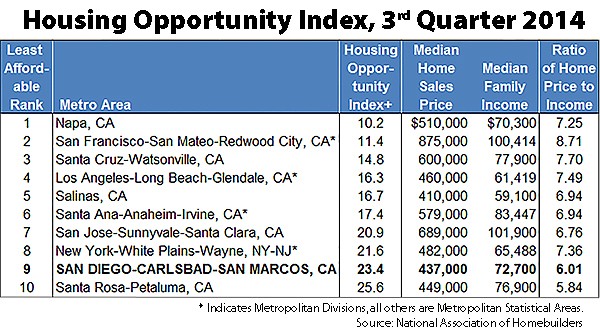
However, Kelly Cunningham, economist for the National University System Institute for Policy Research, doesn’t flay San Diegans for their tax aversion. In effect, “We pay taxes in another way,” he says. The cost of living is sky-high, “and the biggest cost is housing prices. Utility rates are high; it’s fortunate that we don’t have to heat or cool our homes as much as those in other cities do.” The cost of living is quite high in cities such as San Jose and San Francisco, but salaries are also inordinately high, he points out. San Diego’s household income is fairly high but not enough to catch up with the cost of living. “We have to eke out an existence,” he says.
But he concedes the infrastructure is in bad shape: “It’s obvious to anyone driving on the roads how poorly they are maintained. We have an ancient sewer system that tends to break down when it rains. It’s rare when it rains, but when it does, it’s often a huge disaster.”


San Diego needs more broken ankles caused by sidewalk upheavals, more expensive tire realignments and axle repairs resulting from potholes, and more sewer backups into residences.
Then San Diegans may wake up to their woeful infrastructure problem. “People want their streets fixed but aren’t that interested in anybody else’s streets,” says Norma Damashek, civic activist. “If our sewers don’t back up into our own house, we assume everything is okay.”

In November, Andrea Tevlin, independent budget analyst, said that the city’s infrastructure deficit is above $2 billion, more than double the level of 2012. And that doesn’t include added costs to satisfy new storm-water regulations or expenses for new infrastructure. Multiple measures to combat long-term drought and climate change are not included in that number.



“If you look at road repair, water and sewer lines, basic infrastructure, $2 billion sounds like a lowball figure,” says Steve Erie, professor of political science and director emeritus of the Urban Studies and Planning Program at the University of California San Diego. In the city of San Diego, “Infrastructure will always finish last competing with convention centers and subsidized sports stadiums. This is a town that has never figured out how to do infrastructure.”
Local politicians acknowledge the neglect but don’t do much about it. On April 26, 2012, the San Diego County Grand Jury issued a report on San Diego city street repair, funding, and reforms. “There are many public outcries and complaints concerning the City of San Diego’s management of its street repair backlog,” said the grand jury, recommending a “broad-scale rethinking of repair and maintenance of this vital community asset.” In November 2011, only 10 percent of San Diego’s major streets were in good condition, said the panel, quoting a national research group.
The same research group said 50 percent of San Diego’s major thoroughfares were in poor condition — “more than twice the national average for large population areas,” said the grand jury. Importantly, it said that “a status quo service level that slowly deteriorates streets over time is not satisfactory.”

Then–mayor Jerry Sanders agreed, although he partially disagreed with some of the grand jury’s other pronouncements.

Michael Aguirre, who was city attorney from 2004 to 2008, several times reminded the council that city charter section 26.1 provides that it is “the obligation and responsibility of The City of San Diego to provide public works services, water services, building inspection services, public health services, park and recreation services, library services, and such other services and programs as may be desired.”
San Diego must have sufficient capital assets, and those assets, including infrastructure, must be maintained, says Aguirre, adding, “The city was not keeping track of how bad it was getting.”
He doesn’t think significant headway has been made since his time in office. “Our city is deteriorating, its infrastructure is crumbling, its roads are in worsening shape while the council watches hundreds of millions of dollars drained away into excessive pensions and doesn’t have the money to address the problem.”

As a candidate, mayor Kevin Faulconer noted that poor road conditions were picking motorists’ pockets. “As financial crises and unsustainable pension benefits took tax dollars away from San Diego communities, the City of San Diego developed a backlog of neighborhood repairs estimated to be as high as $3 billion,” Faulconer said. “Historically, the city kept incomplete records and did not adequately track when records were needed.”
In November of last year, Faulconer released his five-year financial outlook, and 98 percent of priority spending initiatives were for infrastructure and neighborhoods and public safety. However, recently the mayor said he wants to keep the Chargers in San Diego, and realistically, that won’t happen without the city putting up 70 to 80 percent of the money for a stadium. (Harvard urban-planning expert Judith Grant Long studied 121 sports facilities and found that when hidden costs are taken into account, on average, taxpayers pick up 78 percent of the tab.)
Unfortunately, in San Diego, infrastructure may take a backseat to subsidizing a billionaire family. “It’s very likely people will get sucked in” to a massive stadium subsidy, says Damashek. “People will consider what makes them feel good, not whether we have the money to pay for it.”
Ah, money. Independent budget analyst Tevlin says that to tackle the infrastructure problem, “It is clear that the city must find new revenue sources.” Compared to other cities, “San Diego’s fees and taxes are low.” To wit: San Diego’s sales tax is 8 percent; San Jose’s and San Francisco’s are 8.75 percent; Los Angeles’s 9.0; and Seattle’s 9.5. San Diego’s transit occupancy (hotel) tax is 12.5 percent; the Los Angeles rate is above 15 percent and San Francisco above 16. San Diego has no parking tax, but Los Angeles has one at 10 percent and San Francisco 25. San Diego has no utility users tax; many other cities have one from 1 to 11 percent. San Diego has free refuse collection; no other major California city does. San Diego’s storm-water fees are lower than those in other state cities.
Following Proposition 13, “Other California cities found new revenue sources. San Diego has not,” says Erie, lamenting the “tax averse” citizenry. The voters routinely reject bond issues. “As a result, San Diego infrastructure and public services suffer.”


However, Kelly Cunningham, economist for the National University System Institute for Policy Research, doesn’t flay San Diegans for their tax aversion. In effect, “We pay taxes in another way,” he says. The cost of living is sky-high, “and the biggest cost is housing prices. Utility rates are high; it’s fortunate that we don’t have to heat or cool our homes as much as those in other cities do.” The cost of living is quite high in cities such as San Jose and San Francisco, but salaries are also inordinately high, he points out. San Diego’s household income is fairly high but not enough to catch up with the cost of living. “We have to eke out an existence,” he says.
But he concedes the infrastructure is in bad shape: “It’s obvious to anyone driving on the roads how poorly they are maintained. We have an ancient sewer system that tends to break down when it rains. It’s rare when it rains, but when it does, it’s often a huge disaster.”
Comments